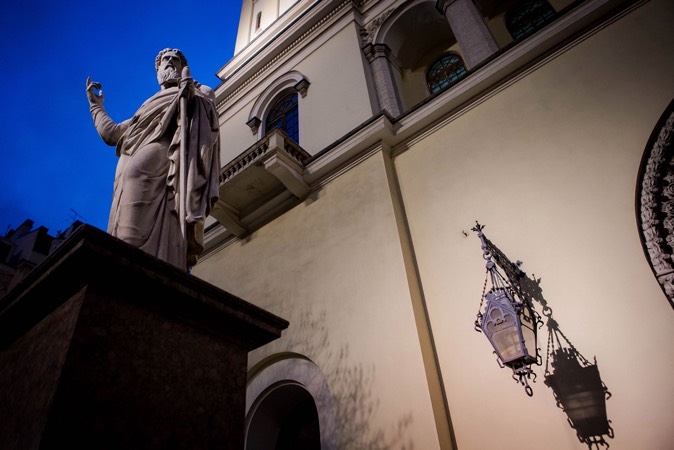Petrikirche
Since the beginning of the XVIII century, the city has witnessed migratory flows from Western Europe. Peter I himself made every effort to encourage German scientists to settle in St. Petersburg. At that time, out of 111 members of the Academy of Sciences, more than sixty were of German origin Anna Ioannovna and Catherine II continued the policy of attracting foreigners to Russia.
In the 19th century, the German community expanded at the expense of German colonists, and the same happened in the twentieth century until the Second World War, which was fatal for many “Russian Germans”.
Nevertheless, in the late 1980s, the German community became more active. The sights of the German Quarter attract many tourists. It is located on Nevsky Prospect, 22-24 and is a monument of architecture, culture and history, as well as the Evangelical Lutheran center. In the middle of the square is the Petrikirche church, built by Alexander Bryullov in the 30s of the XIX century. Not only the Classicist building itself is of particular architectural and aesthetic value, but also the abundance of sculptures by German artists. In the lobby of the church there is an exposition “Leningrad Germans — before and after...”.
Petrikirche is open daily for both tourists and parishioners. It is possible to take a tour of the catacombs.
You can also see the bust of Johann Goethe in the quarter.
Behind the Petrikirche temple is the German school Petrischule. The building itself was erected in the 60s of the XVIII century in the Baroque style. At different times, Rossi, Benoit, Mussorgsky graduated from it.
Address
22-24, Nevsky Prospect
Address
22-24, Nevsky Prospect
Address
22-24, Nevsky Prospect
Website
Petrikirche
Website
Petrikirche
Website
Petrikirche
Source
https://kudago.com/spb/place/razvlekatelnyj-centr-unikum/
Source
https://kudago.com/spb/place/razvlekatelnyj-centr-unikum/
Source
https://kudago.com/spb/place/razvlekatelnyj-centr-unikum/


